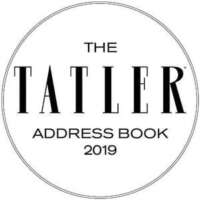Expert Insights
How to Finalise Your US College List in 5 Easy Steps
Published 26th September 2025 by Alastair

Choosing which U.S. universities to apply to is one of the most important and often the most overwhelming stages of the U.S. admissions process.
With over 4,000 institutions across the country, narrowing down your options can feel daunting. Yet creating a well-researched, balanced college list is the cornerstone of a successful application.
The process is not just about finding famous names or following the preferences of friends and family; it is about identifying environments where you can truly thrive, academically and personally. A thoughtful list helps you manage deadlines, focus your energy on the right applications, and ultimately gives you peace of mind knowing that each university is a place you would be excited to attend.
Here are 5 easy steps to help you approach the admissions process with confidence and clarity. Read on!
Many students start with a long list of 20–30 universities, which is a great way to explore possibilities. But when it comes time to prepare essays, complete supplements, and organise interviews, a shorter list, usually 8–12 colleges, is far more practical.
Finalising your list ensures that:
You can dedicate enough time to tailoring essays and applications to each university.
You strike the right balance between reach, match, and safety schools.
You reduce stress and keep your application process manageable.
You approach deadlines with clarity and confidence, rather than spreading yourself too thin.
Remember: Balance is key! A list made up only of highly selective universities may leave you with no offers, while a list composed entirely of “safe” options may not reflect your full potential.
Start by revisiting the criteria that matter most to you. These may include:
Academic fit: Are your grades and test scores aligned with the admissions profile of each university?
Financial considerations: Which universities provide generous aid or scholarships for international students?
Location and size: Do you see yourself in a large urban campus or a smaller, close-knit college community?
Programme strengths: Are your intended subjects or majors particularly strong at certain institutions?
Culture and opportunities: Which campus environments and extracurricular activities would allow you to flourish?
Once you have your longlist, evaluate each university systematically:
Create a comparison matrix with factors such as selectivity, aid opportunities, academic strength, location, and campus culture.
Eliminate non-starters — universities that don’t meet your essential requirements, such as offering your chosen course or adequate financial support.
Group into reach, match, and safety categories to ensure balance.
Avoid duplication by checking that your list reflects genuine variety in size, location, and type of institution.
Once you have your longlist, evaluate each university systematically:
Create a comparison matrix with factors such as selectivity, aid opportunities, academic strength, location, and campus culture.
Eliminate non-starters — universities that don’t meet your essential requirements, such as offering your chosen course or adequate financial support.
Group into reach, match, and safety categories to ensure balance.
Avoid duplication by checking that your list reflects genuine variety in size, location, and type of institution.

Your final list should align with the admissions routes available:
Early Decision / Early Action: Choose one aspirational but realistic university to apply to early, if appropriate.
Regular Decision: Ensure a healthy balance of matches and safeties alongside your reaches.
Rolling admissions: Keep in mind that some universities review applications as they come in, which can provide useful early clarity.
Before you commit, ask yourself:
Am I comfortable with the number of applications?
Do I have at least one safety school I’d be genuinely happy to attend?
Is my list financially realistic?
Does each university excite me, or am I including some simply because of name recognition?
Once you’ve finalised your list, it’s important to stay committed. That said, it’s natural to make minor adjustments if you discover a university that feels like a perfect fit or if your circumstances change. Just be sure that any changes are deliberate and strategic, not last-minute reactions to stress.

Finalising your US college list is both a practical and a reflective exercise. It requires you to look honestly at your academic profile, your preferences, and your aspirations, and to translate these into a balanced and realistic set of applications. Done well, this step will allow you to approach the admissions process with confidence and clarity.
At Ivy Education, we specialise in guiding students through every stage of the US university admissions journey, from exploring options to preparing polished applications. If you’d like tailored support in building and finalising your college list, find out more about our US University Consultancy services.
Most students apply to between 8 and 12 colleges. This number is usually manageable while still giving you a good balance of reach, match, and safety schools.
A reach school is highly selective and may be just beyond your academic profile, though admission is still possible. A match school fits closely with your grades, test scores, and overall profile. A safety school is one where you are highly likely to gain admission, but which you would still be excited to attend.
Applying Early can give you an advantage at certain universities, but Early Decision is binding. You should only apply ED if you are absolutely sure that the university is your first choice and the financial aid package would work for you. Early Action is non-binding, offering more flexibility.
That’s why safety schools are so important; they provide a strong backup. It’s also wise to make sure your safety options are institutions you would genuinely be happy to attend.
Campus visits are helpful but not essential. Many universities offer excellent virtual tours, online information sessions, and student panels. These resources can give you a good sense of the campus environment without the need to travel.
For many families, it’s crucial. Some universities offer generous need-based or merit-based aid to international students, while others offer very limited support. Research this early and let it guide your list.
Yes — within reason. It’s common to make small adjustments if you discover a new programme or decide a certain university isn’t the right fit. Just ensure that changes are made strategically, not reactively.










